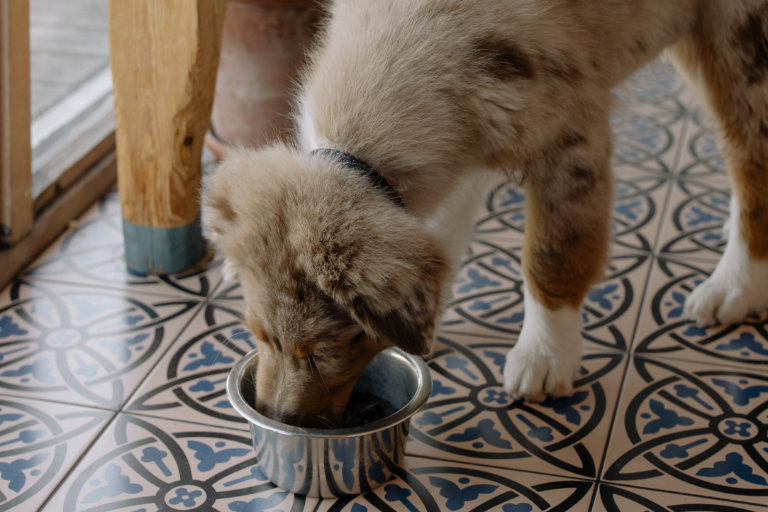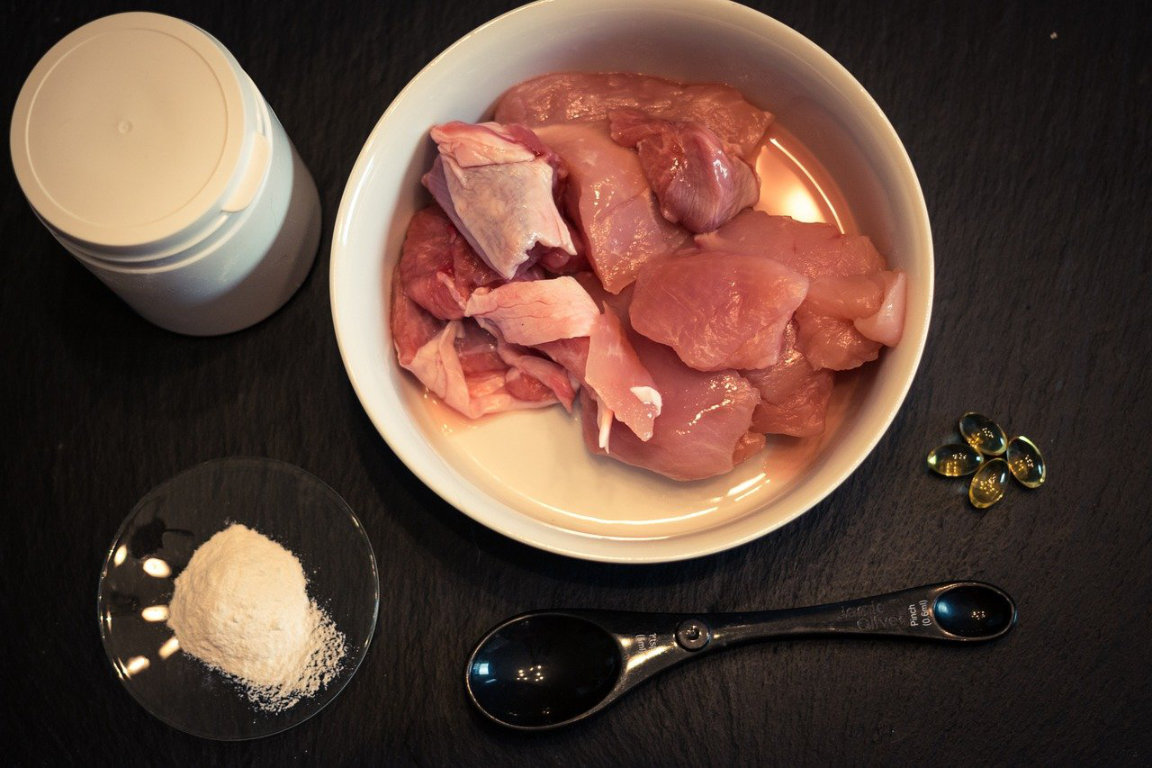Your dog's diet
One of the most important ways to make sure that your dog is as healthy as can be is to provide it with a balanced and high quality diet. By taking some time out of your day and familiarising yourself with the basics on what constitutes a healthy nutrition, you can be sure that your dog gets everything it needs from its daily meals.
Meal time routines and other things
The things dogs need from their food changes throughout their lives, depending on their age, size, health, and general activity level. While a high protein diet satisfies a puppy’s need for energy and ensures a healthy growth and development, it’s less suitable for a senior dog, who is sleeping away its days on the couch. By considering these factors, you can make sure that the diet you’ve chosen meets your dog’s needs.
A healthy adult dog should be fed two times a day. By choosing specific meal times, for example mornings and evenings, and leaving your dog’s bowl in the same spot, you can establish a routine that both of you can rely on. Bonus question: What should always be accessible, especially so during meal time? You’ve guessed correctly, the answer is water.

Let’s talk about poop for a second. To find out if a diet agrees with your dog, you can keep an eye out during potty time. A well-formed, solid but squishy (please use a poop bag to find out), normal-coloured (as in brown) poop means your dog has an easy time digesting its food. Additional signs are your dog showing its usual active behaviour, as well as a shiny coat that doesn’t smell bad. Once you’re happy with a product or manufacturer, stick to it and don’t change it too often to avoid digestive problems.
What goes into your dog's food?
With rising consciousness about what goes into our food, the interest about the quality of pet food has grown as well. The result is a vast variety of products on the market, ranging from vegetarian, over gluten-free, to organic. Although the standards manufacturers are being held to have risen, distinctions can still be made between different products and a high price is not always an indicator for high quality. The key to telling which products are keeping their promises lies in being able to decipher the list of ingredients that is stated on the packaging.
Whatever is on the top of the list makes up the biggest share of what the food is made of, with shares decreasing the further down the list you go. With that in mind, protein in the form of meat should make up the highest percentage of ingredients, preferably with not only muscle meat but innards, bones and tendons as well, as they contain important nutrients. The more specific the components are listed, the better a picture you’ll get about where the protein actually comes from and how much of it your dog needs.

Vitamins, fatty acids and carbohydrates should also be found on the ingredient list. Grain in dog food is something studies and the public opinion have not yet conclusively decided on. It’s not harmful in any way, there’s just the question whether dogs actually benefit from it or not. If you’re unsure, go with products that are labelled as ‘grain-free’ or choose products with whole grain over processed grain. What you should steer clear of are artificial additives and preservatives, as well as sugar, for the same reasons that we humans should not consume it excessively.
All this information provides you with a rough guide line, enabling you to make quality comparisons between different products. More detailed descriptions and in-depth understanding of how the list of ingredients is put together could fill five more blogs, so budget enough time if you’re interested in doing more thorough research on the topic.
To get you started, the FDA’s regulation on pet food provides information on products sold in the US, while the Food Standards Agency covers regulations within the UK. You’ll find information concerning the EU on the European Commission’s site on Animal Feed.
Moving on to dry and wet food
As long as the food is high quality and labelled as ‘complete’, meaning that it contains all the required nutrients for a daily meal, choosing between dry and wet food depends on personal preference and your dog’s specific needs. Feeding your dog dry food is usually not very time-consuming and produces less waste than opening multiple cans of wet food per week.

For your dog though, wet food is inherently more exciting because of its smell and texture. Ironically, the very things that make it so unappealing to us. With regard to your dog’s health, there’s nothing to be said against feeding it with wet food only. Older dogs with dental problems (or no teeth at all) can really benefit from a diet based on wet food.
Good news is, you can have the best of both worlds: by alternating meals between dry and wet food, or mixing in a spoon of wet food among the kibble, you can keep your dog excited for its meals.
The B.A.R.F. diet
According to the internet, B.A.R.F. stands for a lot of different things, most commonly for Biologically Appropriate Raw Food. It refers to a diet that’s based on what the dog’s ancestor, the wolf, naturally ate and what is therefore considered the most appropriate diet for dogs.
B.A.R.F. meals consist of raw muscle meat, meaty bones, organs, such as liver, fruits and vegetables, as well as various supplements, like oils and vitamins. The biggest advantage of choosing the B.A.R.F. diet for your dog is that you know exactly what goes into its meals. If your dog has a sensitive digestion or a lot of allergies, certain ingredients or additives can easily be avoided.

While this all sounds great in theory, note that a lot of effort, time and research has to go into planning this diet in order for it to supply your dog with everything it needs and not leave it with either nutritional deficits or excesses. Preparing a B.A.R.F. meal also takes longer compared to store bought wet or dry food, so ask yourself whether you can add that extra time to your schedule.
If you do decide on the B.A.R.F. diet, check with your vet to see if the feeding plan you’ve worked out is well-balanced. Only a thorough understanding of your dog’s dietary needs and the required ingredients will guarantee a healthy diet with the B.A.R.F. method.
What you feed your dog has a major impact on your dog’s health and well-being throughout its live. As an attentive and responsible owner, you should take the time to find out what kind of diet suits your dog best and adjust it in case problems arise. You’ll be rewarded with a happy, lively and healthy companion, whose well-formed poops you’ll be picking up with the satisfaction of knowing you’re doing a good job.